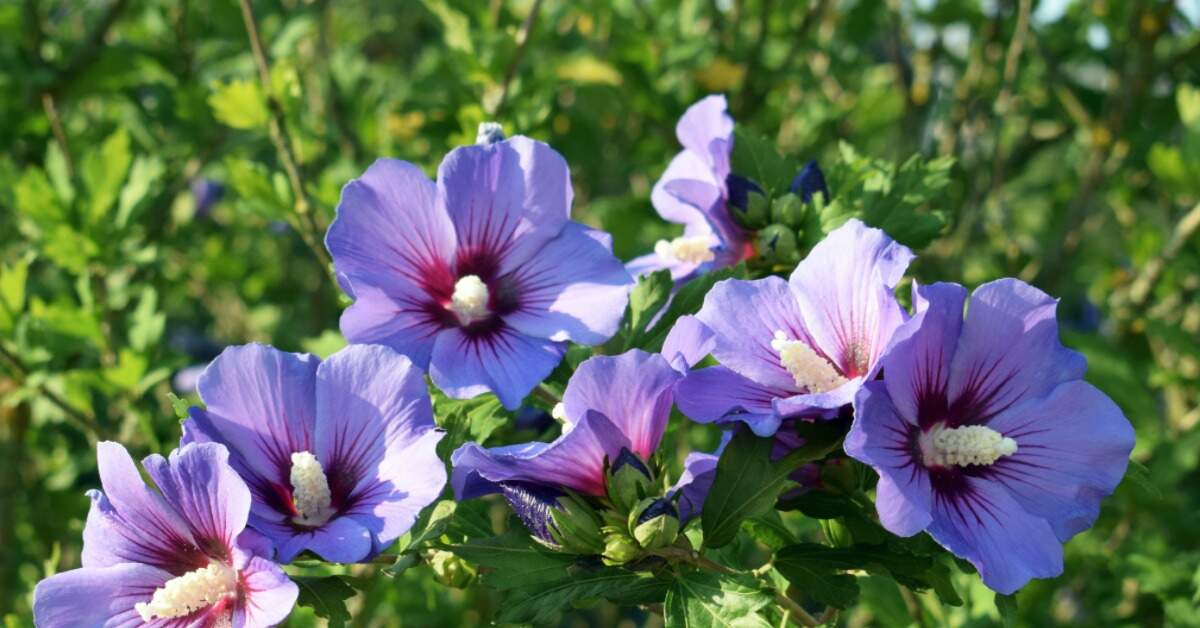Flowers have an extraordinary ability to captivate our senses and evoke a myriad of emotions with their vibrant colors, delicate fragrances, and unique shapes. From the majestic Amaryllis to the graceful Anthurium, and the delicate Anemone to the exuberant Azalea, these blooms provide a captivating glimpse into the diversity of nature’s artistic creations.
In this exploration of “Flowers That Start with the Letter A,” we embark on a journey through gardens, meadows, and forests to discover the secrets and stories behind these remarkable blossoms. From gardens to vases, from legends to traditions, this exploration promises to reveal the rich tapestry woven by flowers that share the humble letter A as the beginning of their names.
List of Flowers That Start with A
- Aconitum (Monkshood)
- Agapanthus (African Lily)
- Alstroemeria (Peruvian Lily)
- Amaryllis (Amaryllidaceae)
- Anemone (Anemone Coronaria)
- Anthurium (Anthurium Andraeanum)
- Aquilegia (Columbine)
- Arum Lily (Zantedeschia)
- Aster (Tripolium Pannonicum)
- Azalea (R. Arborescens)
- Ageratum (Floss Flower)
- Alcea (Hollyhock)
- Allium (Ornamental Onions)
- Alyssum (Lobularia Maritima)
- Amaranthus (Amaranthus Cruentus)
- Ampelopsis (Virginia Creeper)
- Antirrhinum (Snapdragon)
- Aquilegia (Columbine)
- Aristolochia (Dutchman’s Pipe)
- Asclepias (Milkweed)
- Astilbe Chinensis (False Goat’s Beard)
- Aubrieta Deltoidea (Rock Cress)
- Aurinia (Basket-of-Gold)
- Avens (Geum)
- Alyogyne (Blue Hibiscus)
1. Aconitum (Monkshood)
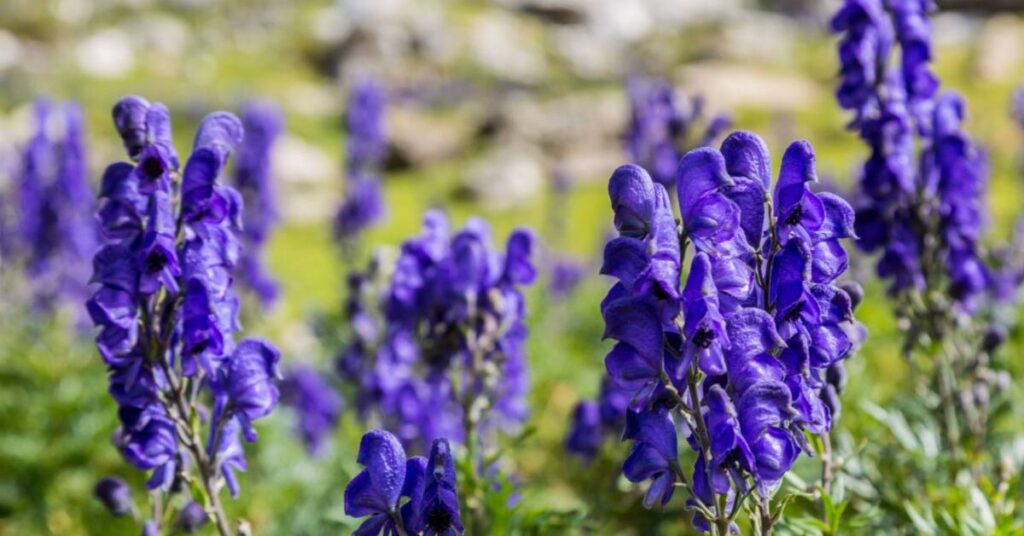
Aconitum, commonly known as Monkshood, is a striking perennial flower characterized by tall spikes of hooded, helmet-like blossoms. These flowers come in shades of blue, purple, or white and have a unique appearance, making them a standout in any garden. However, it’s essential to exercise caution when handling Monkshood, as all parts of the plant are highly toxic if ingested. They make for great floral decor too!
- Watering Needs: Keep the soil consistently moist, especially during the growing season. Avoid waterlogged conditions.
- Bloom Color: Blue, purple, or white.
- Hardiness Zone: Typically zones 3 to 7, but specific varieties may vary.
- Mature Height: Generally 2 to 4 feet (0.6 to 1.2 meters).
- Sunlight Exposure: Partial shade to full sun, but it prefers cooler
2. Agapanthus (African Lily)
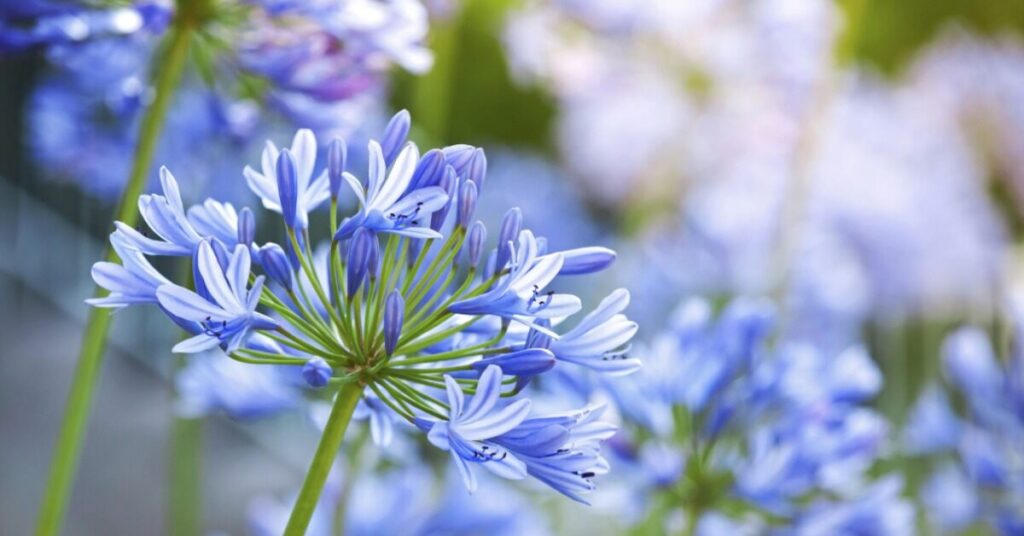
Agapanthus, also referred to as African Lily, is known for its globe-shaped clusters of trumpet-like flowers. These flowers can be found in various shades of blue, purple, or white, and their vibrant colors add a touch of elegance to any landscape or floral arrangement. Native to South Africa, Agapanthus thrives in well-drained soil and sunny locations.
- Watering Needs: Regular watering during the growing season, allowing the soil to dry out slightly between waterings.
- Bloom Color: Blue, purple, or white.
- Hardiness Zone: Typically zones 8 to 11, depending on the variety.
- Mature Height: Varies by species and variety but can range from 1 to 4 feet (0.3 to 1.2 meters).
- Sunlight Exposure: Full sun to partial shade; prefers full sun for optimal blooming.
3. Alstroemeria (Peruvian Lily)
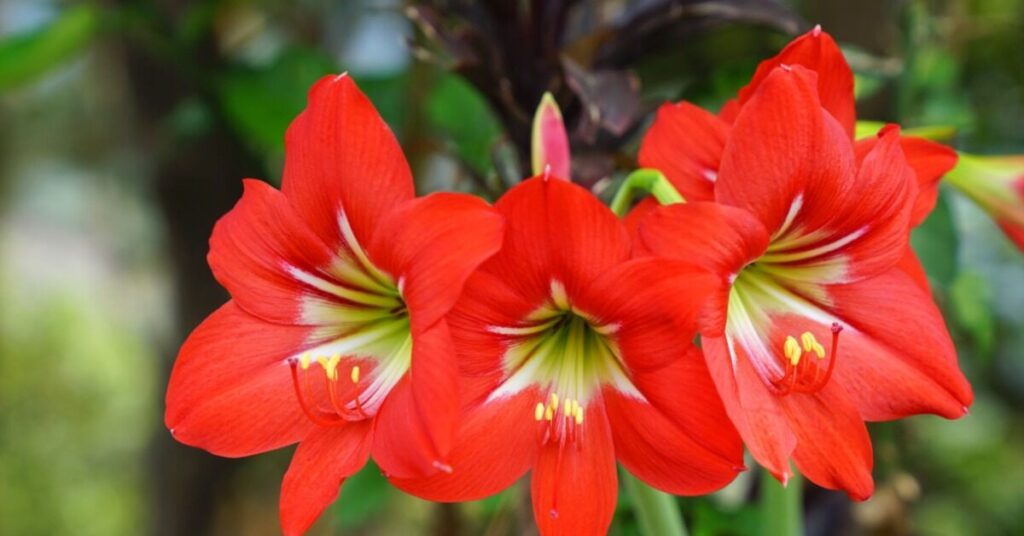
Alstroemeria, commonly known as the Peruvian Lily, is celebrated for its lily-like flowers with intricate markings and a wide range of colors, including orange, pink, and yellow. These vibrant and long-lasting cut flowers are often used to symbolize friendship and mutual support. They add a cheerful and lively touch to gardens and floral bouquets.
- Watering Needs: Keep the soil consistently moist but not waterlogged. Water more sparingly during the dormant season.
- Bloom Color: Various colors, including orange, pink, and yellow.
- Hardiness Zone: Typically zones 8 to 10, but some varieties are hardy to zone 6.
- Mature Height: Typically 1 to 3 feet (0.3 to 0.9 meters).
- Sunlight Exposure: Full sun to partial shade. In warmer climates, afternoon shade can be beneficial.
4. Amaryllis (Amaryllidaceae)
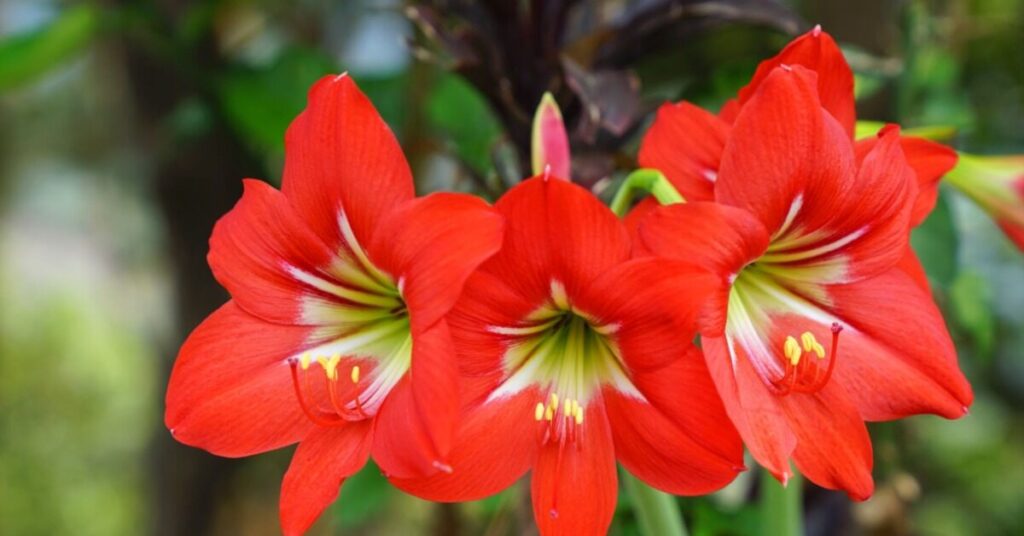
Amaryllis is a bulbous plant that produces large, trumpet-shaped flowers in various captivating colors, such as deep red, pristine white, and delicate pink. These blooms are particularly popular during the winter months and the holiday season, often gracing homes and indoor spaces with their striking beauty. With proper care, Amaryllis bulbs can be encouraged to bloom year after year, making them a cherished addition to any garden or indoor setting.
- Watering Needs: Water thoroughly when the top inch of soil feels dry during the active growing period. Reduce watering during dormancy.
- Bloom Color: Various colors, including red, white, pink, and more.
- Hardiness Zone: Typically not cold-hardy and grown as a houseplant or in zones 9 to 11 if planted outdoors.
- Mature Height: Typically 1 to 2 feet (0.3 to 0.6 meters) for most cultivated varieties.
- Sunlight Exposure: Bright indirect light indoors. Outdoors, partial shade is preferable to protect from harsh sunlight.
5. Anemone (Anemone Coronaria)
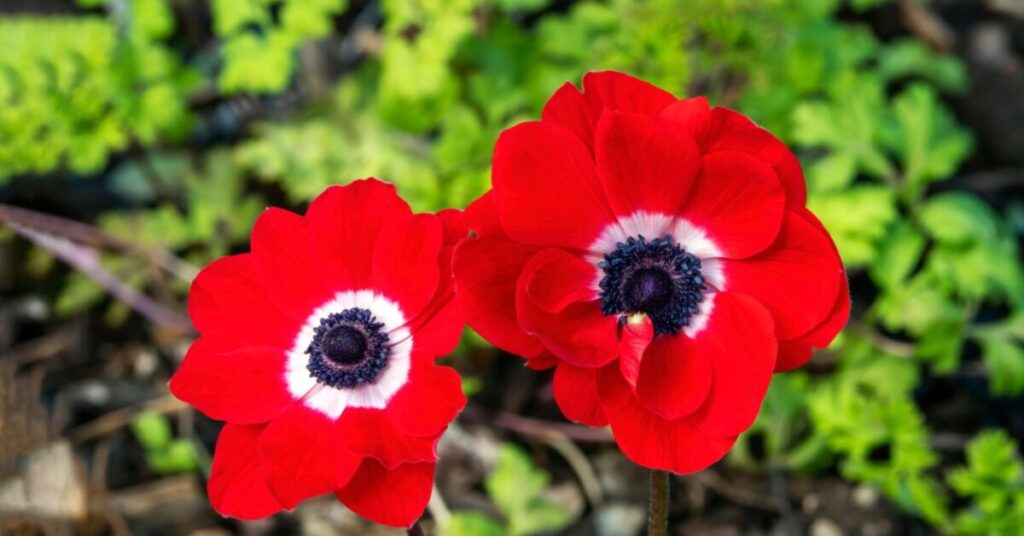
Anemones are delicate and charming flowers known for their daisy-like appearance with a dark, contrasting center. These exquisite blossoms can be found in various colors, including white, pink, and purple, and they symbolize anticipation, protection from evil, and love and affection. Anemones are popular choices for wedding bouquets and garden borders, adding a touch of elegance and beauty to any setting.
- Watering Needs: Keep the soil consistently moist but well-draining. Avoid waterlogged conditions.
- Bloom Color: Various colors, including white, pink, and purple.
- Hardiness Zone: Typically zones 4 to 8, depending on the species.
- Mature Height: Varies by species and variety but can range from 1 to 3 feet (0.3 to 0.9 meters).
- Sunlight Exposure: Partial shade to full sun, with some species preferring more shade.
6. Anthurium (Anthurium Andraeanum)
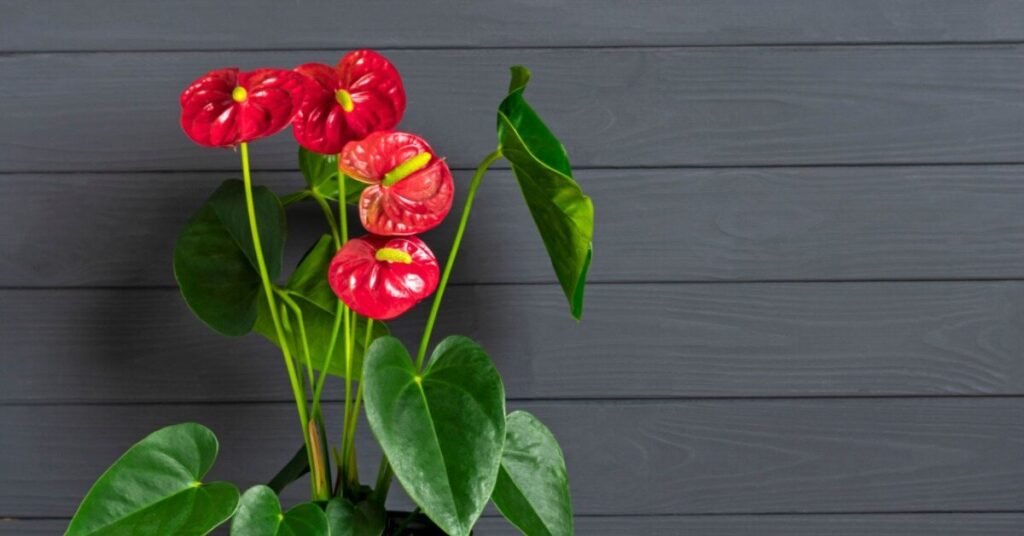
Anthurium is a tropical plant renowned for its glossy, heart-shaped leaves and distinctive spadix-like flowers that come in shades of red, pink, or white. Often referred to as “flamingo flowers” due to their vivid colors and unique shapes, Anthuriums are frequently used in floral arrangements, making a bold and exotic statement. These striking plants thrive in warm and humid environments, making them ideal for indoor cultivation in suitable climates.
- Watering Needs: Keep the soil evenly moist but avoid overwatering. Allow the top inch of soil to dry between waterings.
- Bloom Color: Typically red, pink, or white, but new cultivars offer a broader range of colors.
- Hardiness Zone: Typically grown as a houseplant in most zones but thrives in zones 10 to 12 when outdoors.
- Mature Height: 1 to 2 feet (0.3 to 0.6 meters) indoors.
- Sunlight Exposure: Bright indirect light indoors. Outdoors, partial to full shade.
7. Aquilegia (Columbine)
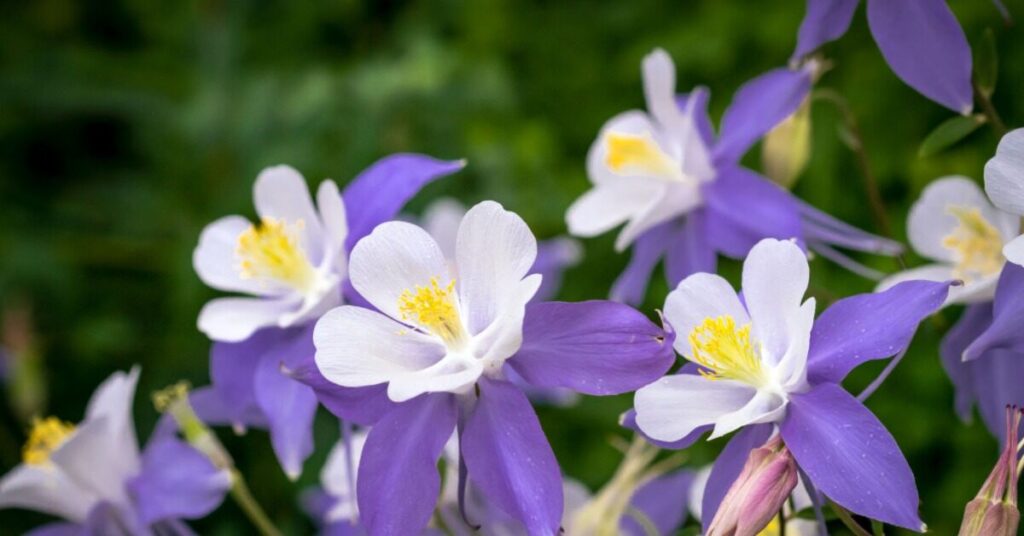
Columbine flowers, scientifically known as Aquilegia, possess distinctive spurred petals and are available in a spectrum of colors, including shades of blue, purple, and yellow. These charming and intricate flowers are known for their attractiveness to hummingbirds and butterflies, making them a favored choice for pollinator gardens. Columbines are frequently spotted in cottage gardens, contributing to their enchanting and nostalgic appeal.
- Watering Needs: Keep the soil evenly moist but avoid overwatering. Allow the top inch of soil to dry between waterings.
- Bloom Color: Typically red, pink, or white, but new cultivars offer a broader range of colors.
- Hardiness Zone: Typically grown as a houseplant in most zones but thrives in zones 10 to 12 when outdoors.
- Mature Height: 1 to 2 feet (0.3 to 0.6 meters) indoors.
- Sunlight Exposure: Bright indirect light indoors. Outdoors, partial to full shade.
8. Arum Lily (Zantedeschia)
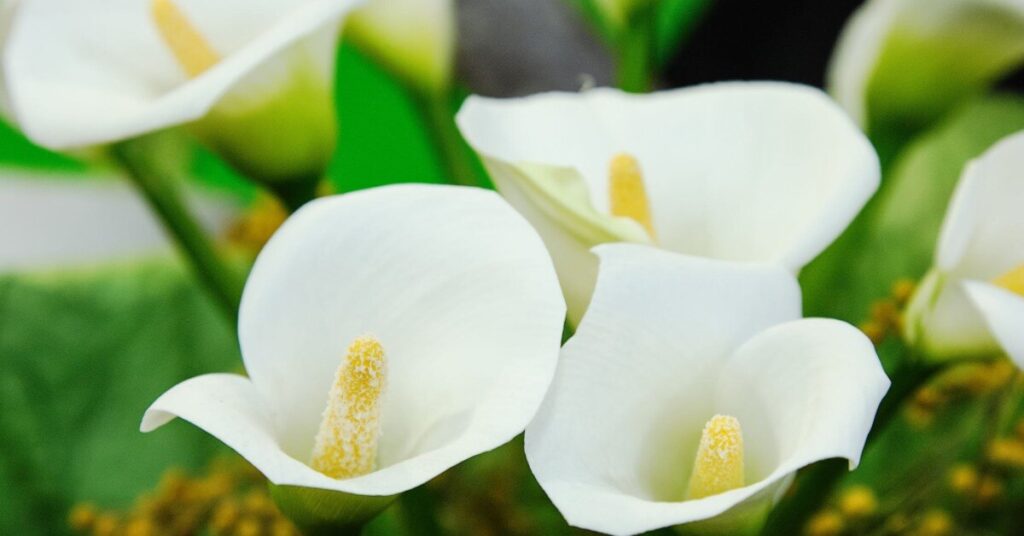
Arum Lily, also called Zantedeschia, is known for its graceful, trumpet-shaped flowers that can be found in elegant shades of white, pink, or yellow. Despite their common name, Arum Lilies are not true lilies and thrive in marshy or aquatic conditions. Their striking appearance and large, arrow-shaped leaves make them a distinctive addition to water gardens and damp areas, lending an air of sophistication to the landscape.
- Watering Needs: Keep the soil consistently moist but not waterlogged, especially during the growing season.
- Bloom Color: Typically white or shades of pink and yellow.
- Hardiness Zone: Typically zones 8 to 10, but can be grown as an annual in colder climates.
- Mature Height: Varies by species and variety but can range from 1 to 3 feet (0.3 to 0.9 meters).
- Sunlight Exposure: Full sun to partial shade, with some afternoon shade in hot climates.
9. Aster (Tripolium Pannonicum)
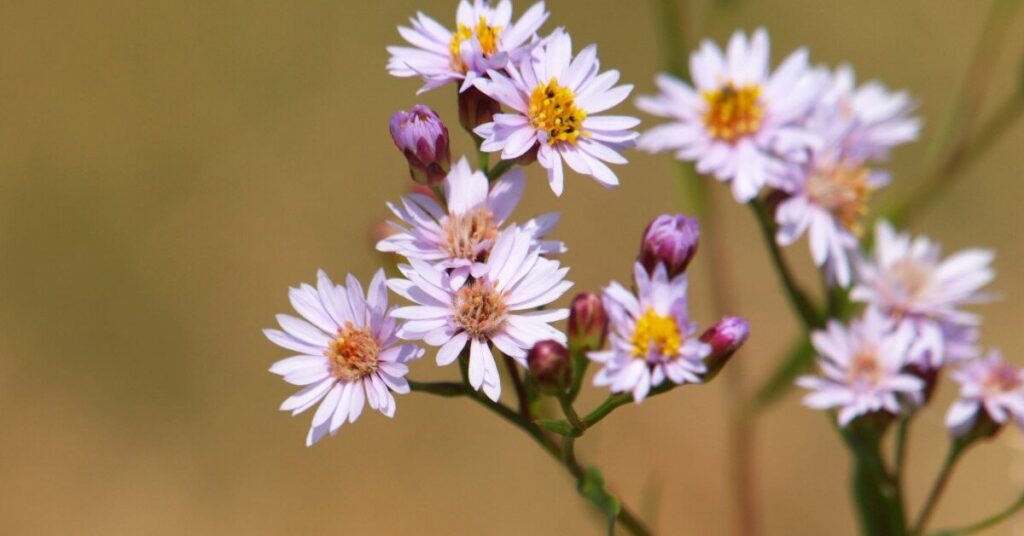
Aster flowers feature daisy-like blossoms with a bright yellow center and petals that come in shades of pink, purple, blue, and white. Asters are symbolic of patience and elegance and are commonly used in cut flower arrangements. They are also cherished by gardeners for their ability to attract pollinators such as bees and butterflies, enhancing the biodiversity and beauty of the garden.
- Watering Needs: Keep the soil consistently moist, especially during hot weather.
- Bloom Color: Various colors, including pink, purple, blue, and white.
- Hardiness Zone: Typically zones 3 to 8, depending on the species.
- Mature Height: Varies by species and variety but can range from 1 to 4 feet (0.3 to 1.2 meters).
- Sunlight Exposure: Full sun to partial shade.
10. Azalea (R. Arborescens)
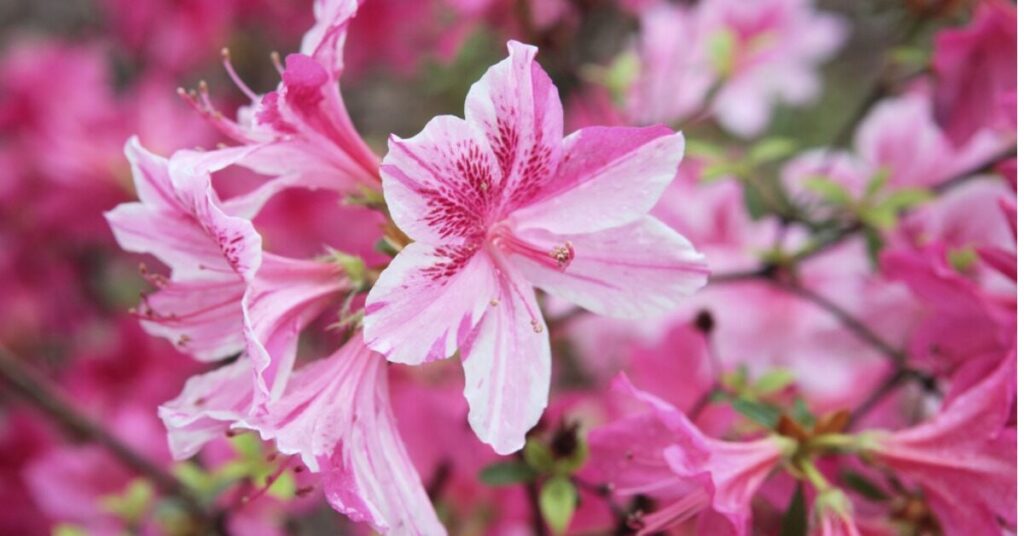
Azaleas are ornamental shrubs that produce clusters of small, trumpet-shaped flowers in a stunning array of colors, including shades of pink, red, and white. These shrubs are highly popular in landscaping due to their vibrant springtime blooms, which add a burst of color to gardens and outdoor spaces. Azaleas are often associated with femininity and passion in various cultural contexts, further enhancing their allure.
- Watering Needs: Keep the soil evenly moist, especially during dry periods. Mulching helps retain moisture.
- Bloom Color: Various colors, including pink, red, and white.
- Hardiness Zone: Typically zones 4 to 9, depending on the species.
- Mature Height: Varies by species and variety but can range from 1 to 8 feet (0.3 to 2.4 meters).
- Sunlight Exposure: Partial shade, with some morning sun and afternoon shade.
11. Ageratum (Floss Flower)
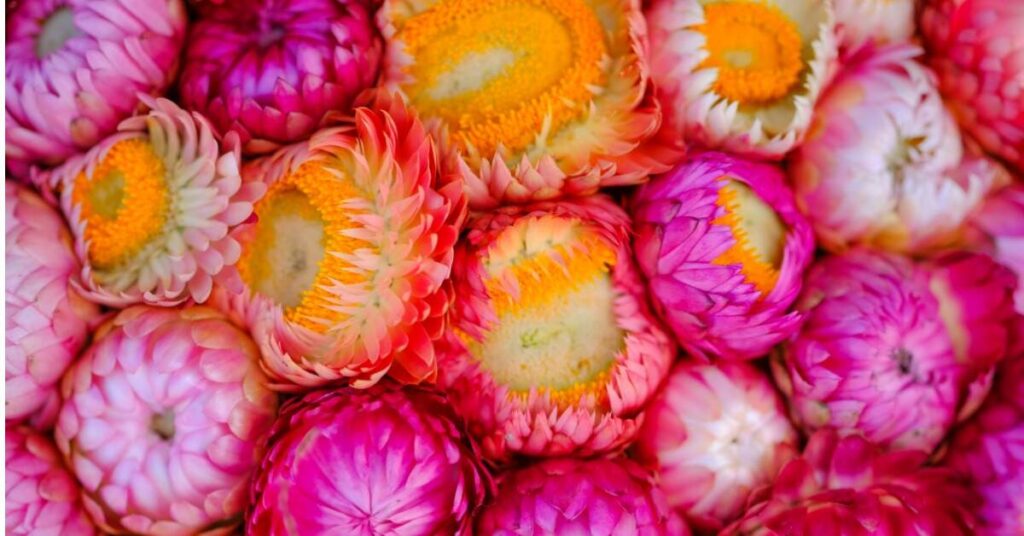
Ageratum is a charming annual or perennial plant known for its fluffy, tufted flowers that appear in shades of blue, purple, and white. These delicate blooms are frequently used in borders, edging, and as fillers in flower arrangements. Ageratum’s petite, fuzzy flowers and soft colors contribute to a sense of gentle tranquility in gardens and floral displays.
- Watering Needs: Keep the soil consistently moist but not waterlogged.
- Bloom Color: Blue, purple, and white are common colors.
- Hardiness Zone: Typically zones 2 to 11, depending on the species.
- Mature Height: Usually 6 to 18 inches (15 to 45 cm).
- Sunlight Exposure: Full sun to partial shade.
12. Alcea (Hollyhock)
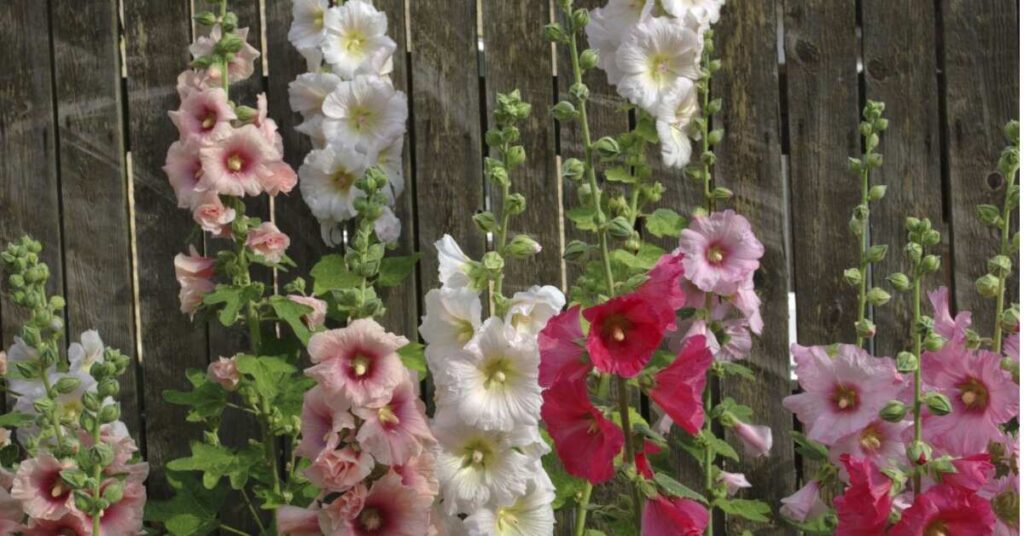
Hollyhocks, scientifically classified as Alcea, are known for their tall spikes of large, cup-shaped flowers that come in a wide range of colors. These stately perennials are often seen in cottage gardens, where their towering floral spires create a captivating backdrop. Hollyhocks are also a magnet for bees and butterflies, adding a dynamic and pollinator-friendly element to the garden.
- Watering Needs: Keep the soil consistently moist but not waterlogged.
- Bloom Color: Blue, purple, and white are common colors.
- Hardiness Zone: Typically zones 2 to 11, depending on the species.
- Mature Height: Usually 6 to 18 inches (15 to 45 cm).
- Sunlight Exposure: Full sun to partial shade.
13. Allium (Ornamental Onions)
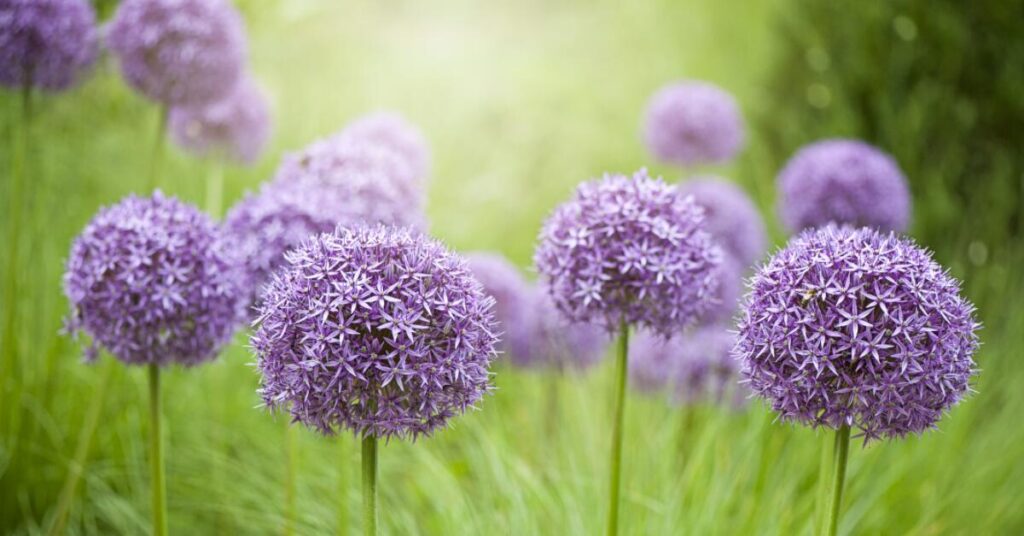
Alliums, commonly known as ornamental onions, are celebrated for their globe-like clusters of small, star-shaped flowers. These unique and eye-catching blooms can be found in various sizes and colors, ranging from striking purples and blues to delicate pinks and whites. Alliums are prized by gardeners for their architectural qualities and their ability to create visual interest in beds and borders.
- Watering Needs: Keep the soil evenly moist during the growing season but allow it to dry out slightly between waterings.
- Bloom Color: Various colors, including purple, pink, and white.
- Hardiness Zone: Typically zones 3 to 9, depending on the species.
- Mature Height: Varies by species and variety but can range from 6 inches to 4 feet (15 cm to 1.2 meters).
- Sunlight Exposure: Full sun.
14. Alyssum (Lobularia Maritima)
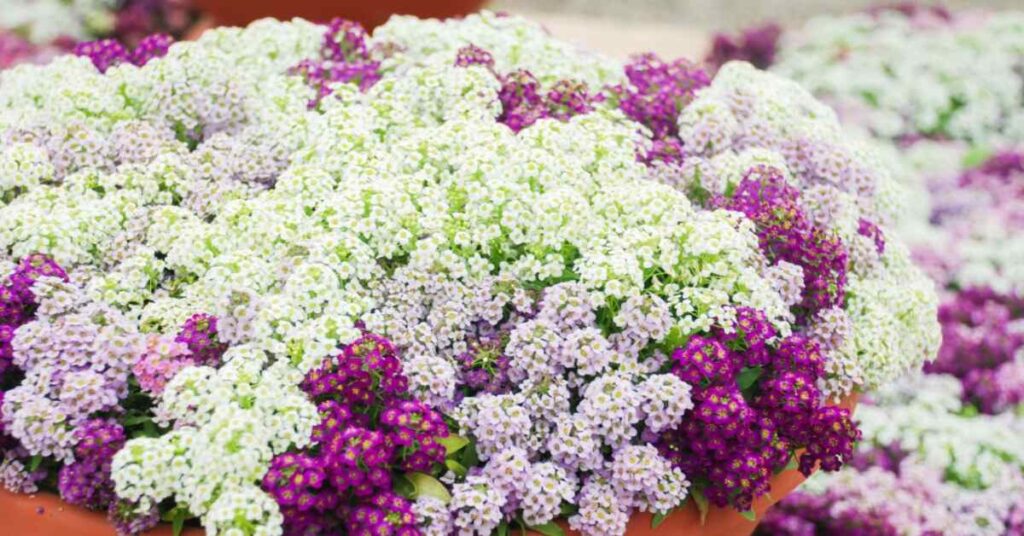
Alyssum is a low-growing annual or perennial plant that produces small clusters of fragrant flowers in shades of white, purple, or pink. These dainty, sweetly scented blossoms are often used as ground covers and are valued for their ability to attract pollinators such as bees and butterflies. Alyssum’s delicate appearance and delightful fragrance make it a beloved addition to gardens and containers.
- Watering Needs: Keep the soil consistently moist but not waterlogged.
- Bloom Color: White, purple, and pink are common colors.
- Hardiness Zone: Typically zones 3 to 9, depending on the species.
- Mature Height: Usually 4 to 8 inches (10 to 20 cm).
- Sunlight Exposure: Full sun to partial shade.
15. Amaranthus (Amaranthus Cruentus)
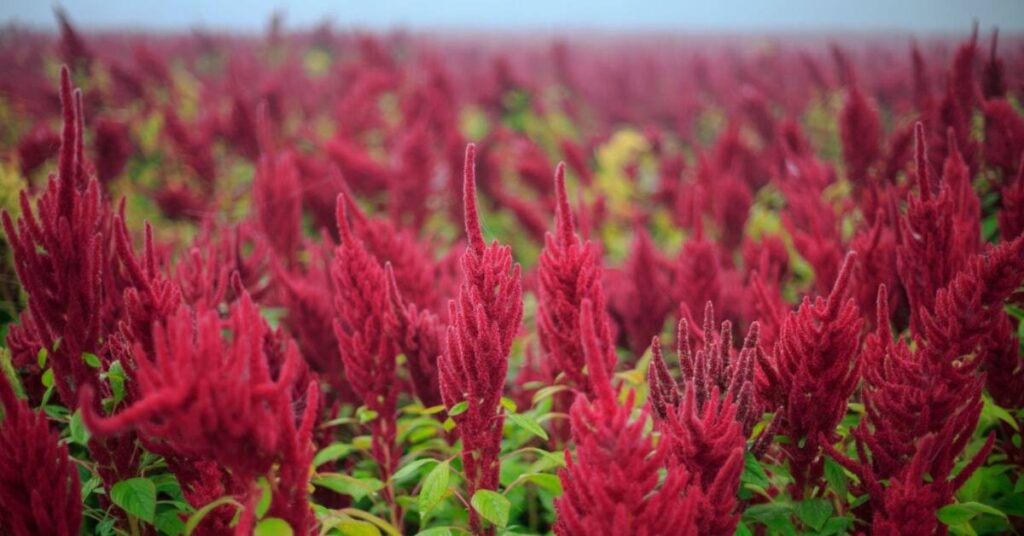
Amaranthus is a captivating plant that boasts striking, long tassel-like flowers in shades of red, burgundy, or green. These dramatic blooms are often used in elaborate floral arrangements and are prized for their unique and eye-catching appearance. Some species of Amaranthus are also grown for their edible leaves, contributing to their versatility and significance.
- Watering Needs: Keep the soil consistently moist during the growing season.
- Bloom Color: The focus is on its striking tassel-like flower heads, typically in shades of red, burgundy, or green.
- Hardiness Zone: Typically grown as an annual in most zones.
- Mature Height: Varies by species and variety but can range from 1 to 6 feet (0.3 to 1.8 meters).
- Sunlight Exposure: Full sun to partial shade.
16. Ampelopsis (Virginia Creeper)
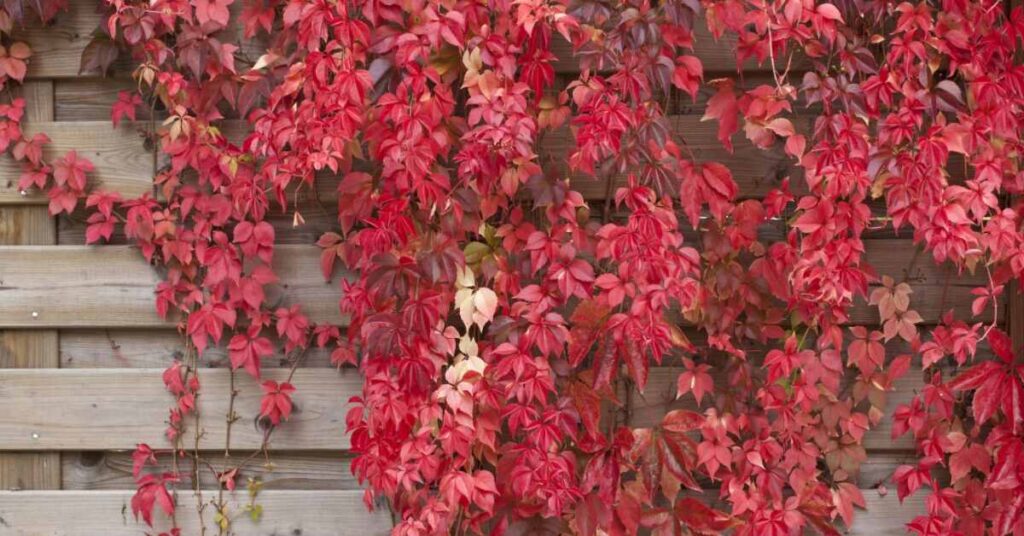
Virginia Creeper, scientifically referred to as Ampelopsis, is a woody vine with small, greenish-white flowers and colorful foliage. While the flowers themselves are inconspicuous, Virginia Creeper is cherished for its vigorous growth and the brilliant red hues its leaves turn in the fall, creating a breathtaking autumnal display. This vine is an excellent choice for covering walls, arbors, and trellises.
- Watering Needs: Keep the soil consistently moist but well-draining.
- Bloom Color: Small, greenish-white flowers, but Virginia Creeper is valued more for its foliage.
- Hardiness Zone: Typically zones 3 to 9, depending on the species.
- Mature Height: Climbing vine that can reach up to 50 feet (15 meters).
- Sunlight Exposure: Full sun to partial shade.
17. Antirrhinum (Snapdragon)
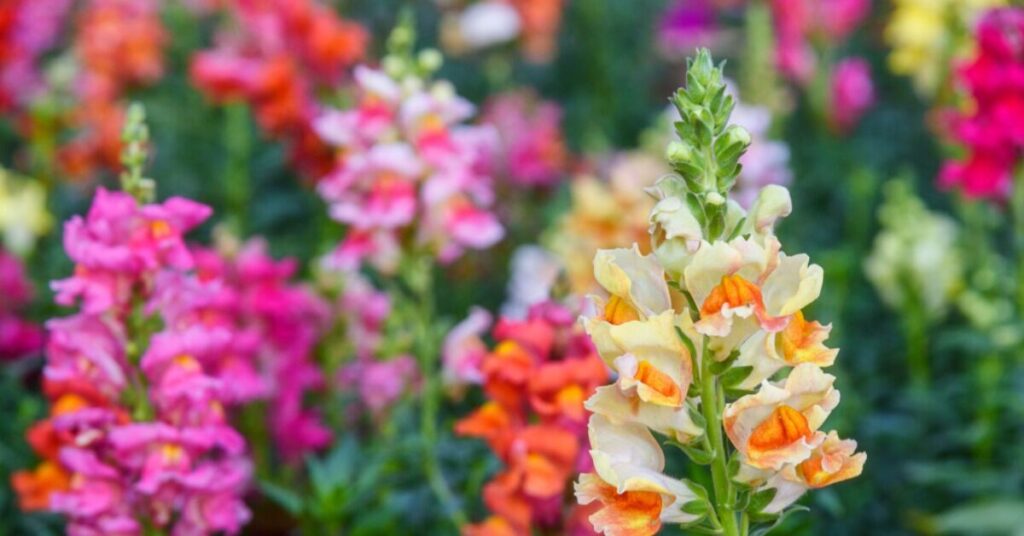
Snapdragons, scientifically known as Antirrhinum, feature spikes of tubular flowers that bear a resemblance to a dragon’s face when gently squeezed. These distinctive and whimsical flowers are available in a wide range of colors and are beloved by gardeners of all ages. Snapdragons add an element of playfulness to gardens and are often used for cut flower arrangements due to their unique shape and vivid colors. You could use them as indoor flowers as well!
- Watering Needs: Keep the soil consistently moist but well-draining.
- Bloom Color: Various colors, including pink, red, yellow, and white.
- Hardiness Zone: Typically zones 4 to 10, depending on the species.
- Mature Height: Typically 1 to 3 feet (0.3 to 0.9 meters).
- Sunlight Exposure: Full sun to partial shade.
18. Aquilegia (Columbine)
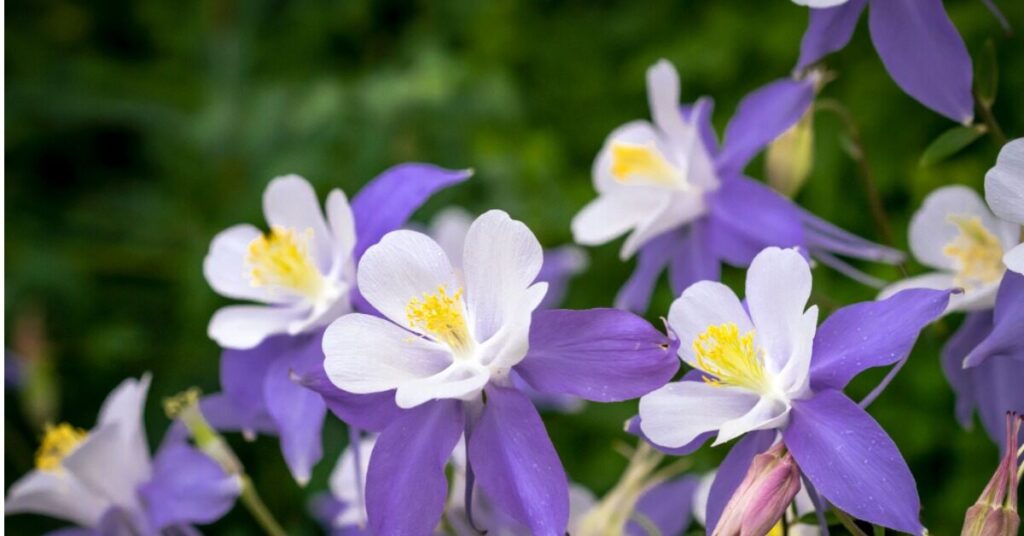
Columbine flowers, scientifically referred to as Aquilegia, possess distinctive spurred petals and are available in a spectrum of colors, including shades of blue, purple, and yellow. These charming and intricate flowers are known for their attractiveness to hummingbirds and butterflies, making them a favored choice for pollinator gardens. Columbines are frequently spotted in cottage gardens, contributing to their enchanting and nostalgic appeal.
- Watering Needs: Keep the soil consistently moist, especially in well-drained soil.
- Bloom Color: Various colors, including blue, purple, and yellow.
- Hardiness Zone: Typically zones 3 to 9, depending on the species.
- Mature Height: Varies by species and variety but can range from 1 to 3 feet (0.3 to 0.9 meters).
- Sunlight Exposure: Partial shade to full sun, with some species preferring more shade.
19. Aristolochia (Dutchman’s Pipe)
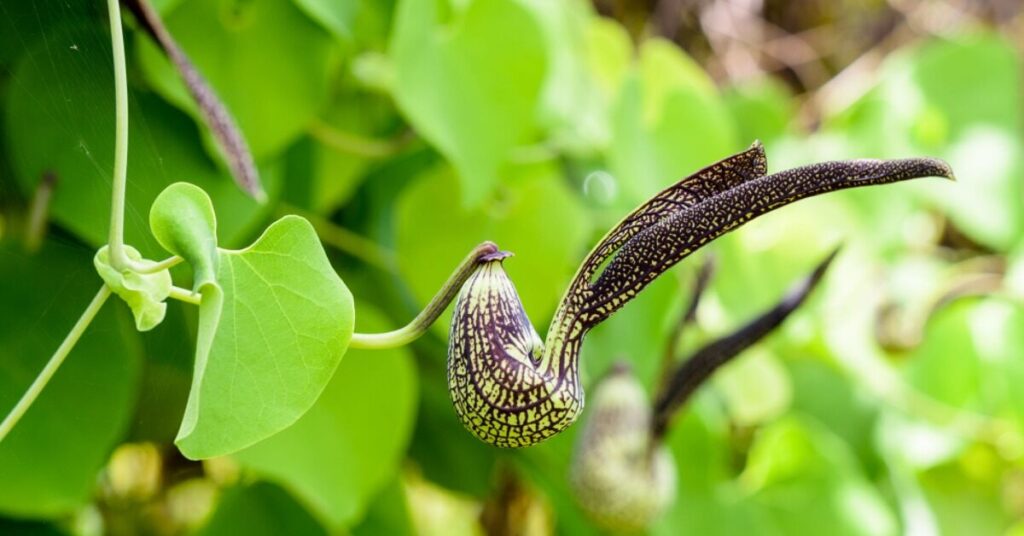
Dutchman’s Pipe, scientifically known as Aristolochia, boasts unusual, pipe-shaped flowers and large, heart-shaped leaves. These captivating blooms are often found in shades of mottled green and brown, resembling the appearance of a Dutch smoking pipe, hence their name. Some species of Aristolochia are known for their distinctive and somewhat foul-smelling flowers, which are designed to attract certain pollinators, such as flies.
- Watering Needs: Keep the soil consistently moist but not waterlogged.
- Bloom Color: Unusual pipe-shaped flowers in various colors, often with intricate patterns.
- Hardiness Zone: Typically zones 4 to 11, depending on the species.
- Mature Height: Varies by species and variety but can range from 2 to 30 feet (0.6 to 9 meters).
- Sunlight Exposure: Full sun to partial shade.
20. Asclepias (Milkweed)
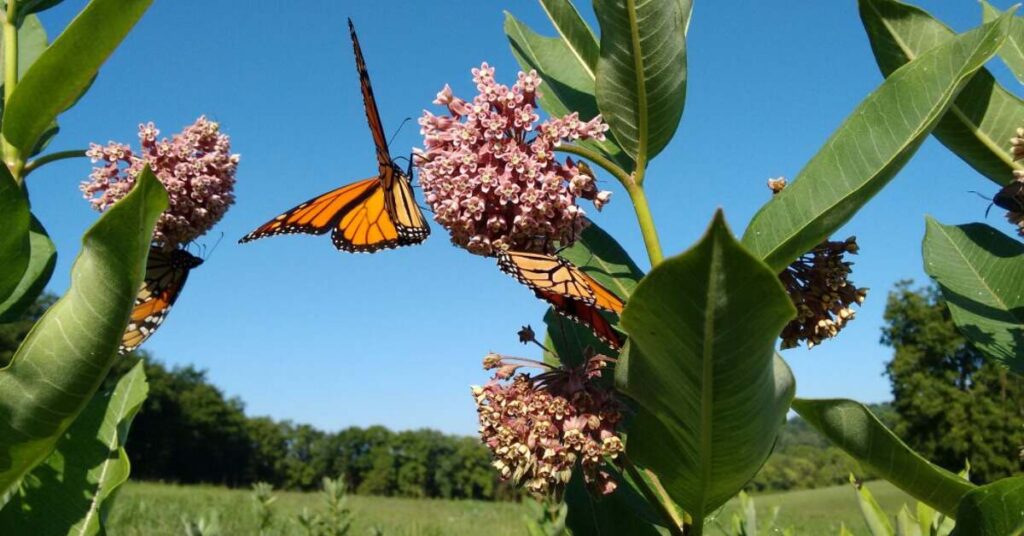
Asclepias, commonly known as Milkweed, produces clusters of small, star-shaped flowers and is an essential plant for monarch butterfly larvae. These blossoms play a crucial role in supporting pollinators and are the host plant for monarch butterflies, making them a valuable addition to pollinator gardens. Beyond their ecological significance, Milkweed flowers have an understated beauty that adds a natural, wildflower charm to gardens and landscapes.
- Watering Needs: Keep the soil consistently moist but not waterlogged.
- Bloom Color: Small, star-shaped flowers in shades of pink, orange, or white.
- Hardiness Zone: Typically zones 3 to 9, depending on the species.
- Mature Height: Varies by species and variety but can range from 1 to 6 feet (0.3 to 1.8 meters).
- Sunlight Exposure: Full sun.
21. Astilbe Chinensis (False Goat’s Beard)
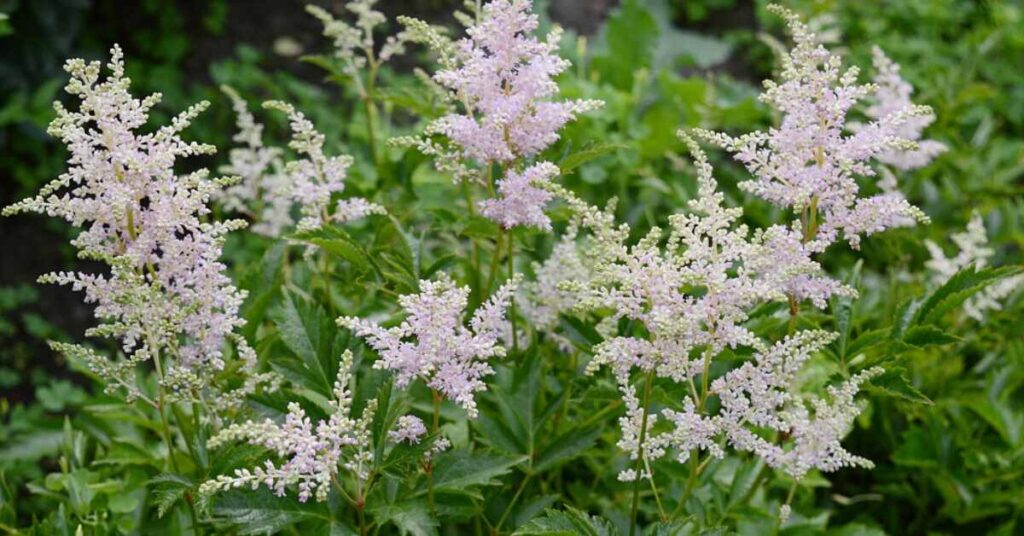
Astilbe is a graceful perennial plant that boasts feathery, plume-like flowers in shades of pink, red, and white. These elegant blooms thrive in shade and moisture-rich environments, making them well-suited for woodland gardens. Their airy and ethereal appearance lends a sense of tranquility and softness to outdoor spaces.
- Watering Needs: Keep the soil consistently moist, especially in well-drained soil.
- Bloom Color: Plume-like flowers in shades of pink, red, and white.
- Hardiness Zone: Typically zones 4 to 8, depending on the species.
- Mature Height: Varies by species and variety but can range from 1 to 4 feet (0.3 to 1.2 meters).
- Sunlight Exposure: Partial shade to full shade.
22. Aubrieta Deltoidea (Rock Cress)
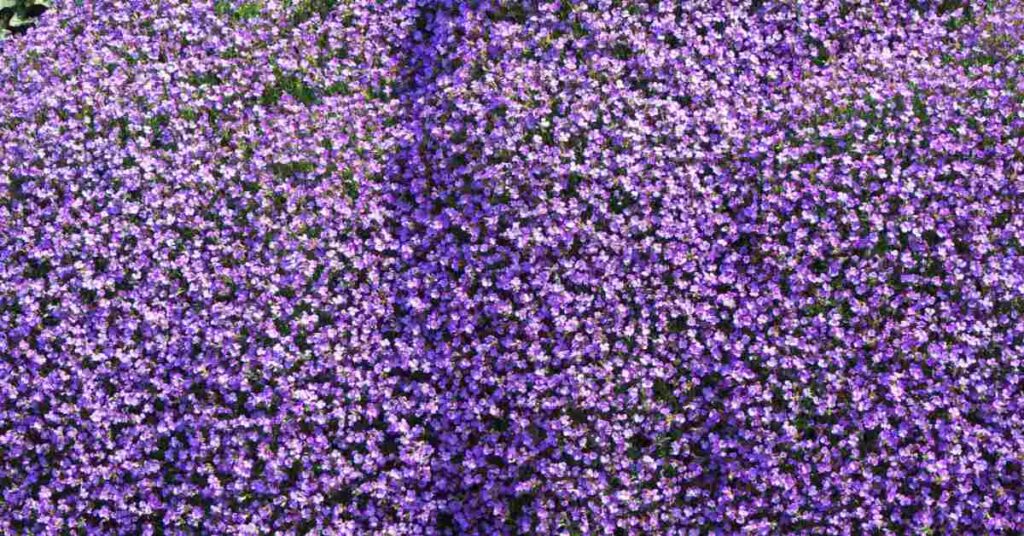
Aubrieta is a low-growing perennial plant that forms cascades of small, violet-blue flowers. These vibrant blooms create a stunning carpet of color and are often used as ground covers in rock gardens and along walls. Aubrieta is admired for its resilience in rocky or dry soils, adding a burst of color to otherwise challenging garden areas.
- Watering Needs: Keep the soil consistently moist but not waterlogged.
- Bloom Color: Small clusters of violet-blue flowers.
- Hardiness Zone: Typically zones 4 to 8, depending on the species.
- Mature Height: Usually 4 to 6 inches (10 to 15 cm).
- Sunlight Exposure: Full sun to partial shade.
23. Aurinia (Basket-of-Gold)
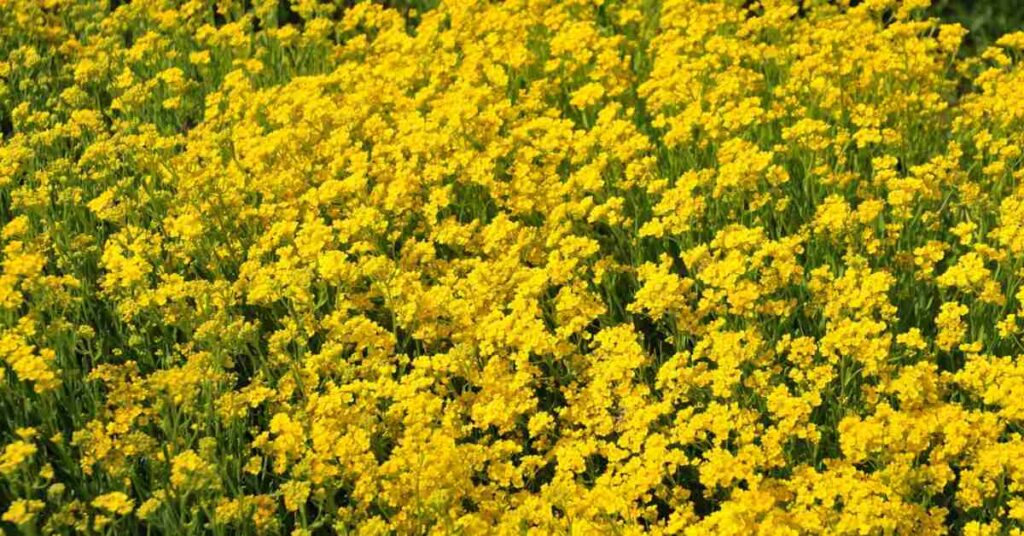
Basket-of-Gold, scientifically known as Aurinia, is celebrated for its masses of bright yellow flowers that cascade like a waterfall of gold. This perennial plant is known for its drought tolerance and is commonly used in rock gardens to create eye-catching displays of color and texture. The cheerful and golden appearance of Aurinia adds a touch of warmth to gardens, making it a prized choice for xeriscaping and water-wise landscaping.
- Watering Needs: Tolerant of drought conditions but benefits from occasional watering.
- Bloom Color: Bright yellow flowers that cascade.
- Hardiness Zone: Typically zones 3 to 7.
- Mature Height: Typically 6 to 12 inches (15 to 30 cm).
- Sunlight Exposure: Full sun.
24. Avens (Geum)
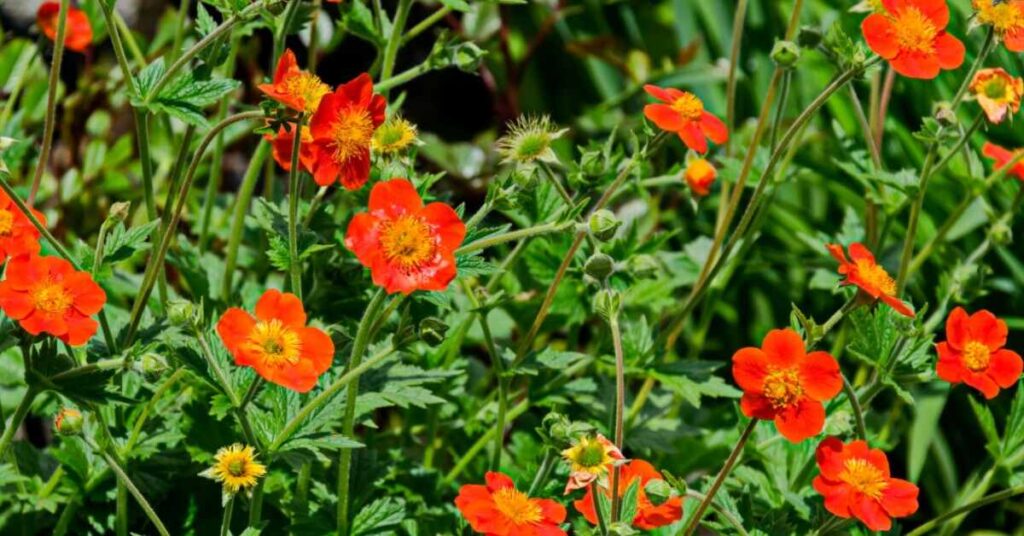
Avens, scientifically referred to as Geum, produces cup-shaped flowers in a range of colors, including orange, yellow, and red. These perennials are known for their attractiveness to pollinators and are prized for their vibrant and cheerful blooms. Avens add a lively and dynamic element to gardens, contributing to the overall biodiversity and beauty of outdoor spaces.
- Watering Needs: Keep the soil consistently moist but well-draining.
- Bloom Color: Cup-shaped flowers in various colors, including orange, yellow, and red.
- Hardiness Zone: Typically zones 3 to 8, depending on the species.
- Mature Height: Varies by species and variety but can range from 1 to 3 feet (0.3 to 0.9 meters).
- Sunlight Exposure: Full sun to partial shade.
25. Alyogyne (Blue Hibiscus)
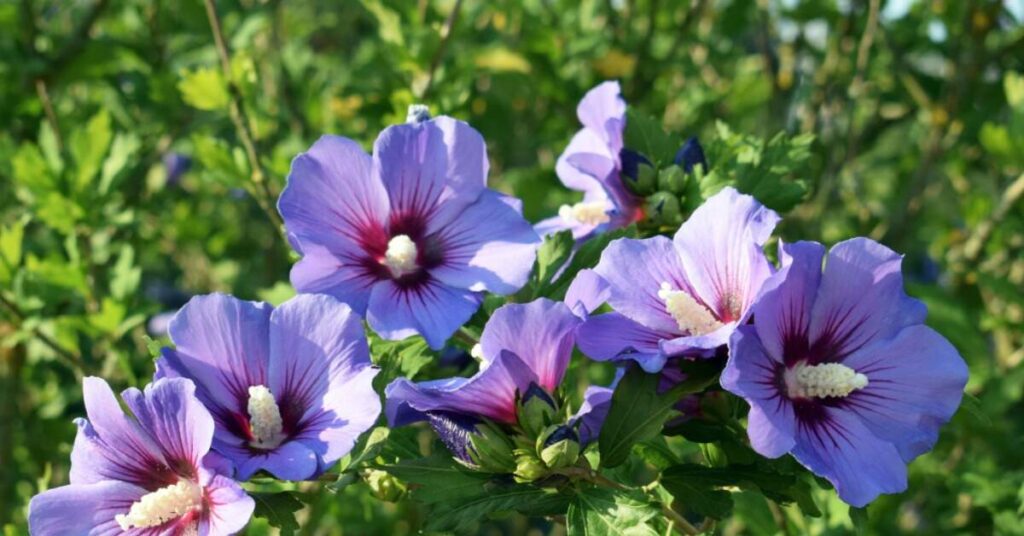
Alyogyne, also known as Blue Hibiscus, is a captivating plant that produces large, hibiscus-like flowers in shades of blue, purple, and pink. This native Australian plant is admired for its striking and vibrant blooms, which create a tropical and exotic atmosphere in gardens and landscapes. Blue Hibiscus is often grown for its unique and mesmerizing flowers, making it a distinctive addition to any outdoor setting. They can really bring some good energy into the home as well!
- Watering Needs: Keep the soil consistently moist, especially during hot weather.
- Bloom Color: Large, hibiscus-like flowers in shades of blue, purple, and pink.
- Hardiness Zone: Typically zones 9 to 11.
- Mature Height: Varies by species and variety but can range from 2 to 6 feet (0.6 to 1.8 meters).
- Sunlight Exposure: Full sun.
